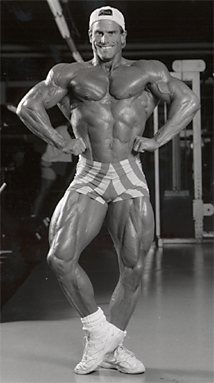

Factors
Affecting YOUR Basal Metabolic Rate
A
person's BMR is influenced by
a number of factors, including age, height, gender, genetics, environmental
temperature, exercise, and diet. The big one you can control is diet followed
closely by the ripped gluteus via exercise. 2 to 3, or 5 or more walks
a day followed by a lean diet will slim down the most resistant fat cell.
Don't be afraid to work hard. Sickness, car trouble child problems, all
of life's events conspire to stop you from training. For now schedule
NO DAYS OFF! Just TRAIN! Life will give you enough days off.
Train as often as you can.
Training
Secret - Train
often as possible
Age
In
general, the younger the person, the higher the BMR because of the increased
activity of cells undergoing division. The BMR is highest during the growth
spurts that take place during childhood, adolescence, and pregnancy. An
individual's BMR peaks at age 20 for both males and females, then decreases
by 2 percent per decade throughout life. For example, at age 30 the BMR
operates at 98 percent efficiency; at age 40, at 96 percent. The decline
in BMR in adults may also be partially attributed to inactivity and the
subsequent loss of muscle tissue (Williams, 1988).
Body
Size
The greater an individual's amount of body surface the faster the metabolism.
Tall, thin people have higher BMRs. For example, for two people of different
shape but of the same weight, the shorter, stocky person will have a slower
metabolic rate than the taller, thinner person. The lean client metabolizes
1.26 calories per minutes (cal/min), the plump one 1.16 calories per minute.
Assuming their caloric consumption is the same, this difference of 0.10
calories yields an excess of six calories per hour, 144 calories per day,
1 pound every 24 days, and 15 pounds per year.
Gender
Due
to the greater percentage of lean tissue in the male body, men generally
have a 10-15 percent faster metabolic rate than women. Lean tissue uses
more calories than fat tissue. Muscle tissue is metabolically highly active
even when at rest, whereas fat tissue is comparatively inactive metabolically.
An increase in muscle mass, for both males and females, elevates the BMR.
Conversely, the more fat tissue, the lower the BMR. Thus, the lean mass
of the body is the major influence on the body's energy requirements and
nutrient needs. Recent research (Williams, 1989) has shown that gender
is not a significant factor in determining the BMR in well-trained athletes.
When body weight is made up of a higher proportion of muscle mass, the
energy requirement for the body increases. When body weight is made up
of a higher proportion of fat or bone, the energy requirement decreases.
The fact remains that women do exhibit a lower BMR. However, this is due
to a smaller proportion of muscle mass to fat rather than gender. This
direct relationship between lean body mass and the elevation of the BMR
points to the importance of strength training for a weight-loss program.
Regular strength training can have a positive effect on the development
and the protection of lean body mass.
FASTING
AND DIETING and the Intestinal BROOM Blast
Training Secret - Clean Out The BOWELS!
A client's metabolic rate can drop as low as 20 percent during fasting or dieting. This drop is due to the loss of lean tissues as well as to the body's effort to conserve energy by slowing down the BMR. This slowing down of the metabolism seems to be a protective mechanism to conserve fat stores when there is a food shortage, and it hampers weight loss in a person who fasts or undertakes a very low-calorie diet (less than 1,000 kcal/day). It is a good idea to fast 3 days a year to clean out the insides. Also every three weeks eat nothing but fibrous carbs for 24 hours and let the intestines clean out. Sometimes a good 8 hours of no food at all and a gallon of lemon water can be fantastic. Also try to get a massage of the abdominals during this time to break up the undigested unmentionables lurking in your intestines.

Training Secret - FLORIDA MAKES
YOU LEANER
Live in a Sunny warm Place.
ENVIRONMENTAL TEMPERATURE. Both heat and cold raise the body's BMR. Persons living in a tropical climate generally have metabolisms 5-20 percent higher than those living in more temperate areas. Exercising in the heat also raises BMR. Muscular shivering in colder climates can increase BMR. If you are serious about being successful in your training I recommend moving to a warm part of the world. It allows nearly year round training and a much longer career in sports. Your mood is better and the girls are prettier in sunny parts of the world. All serious athletes live in a warm region.



